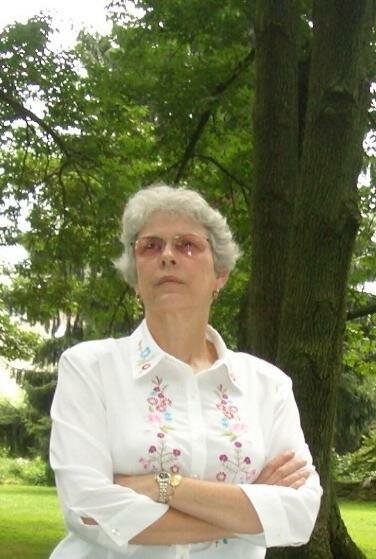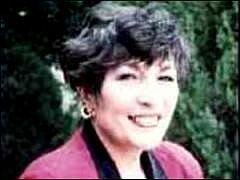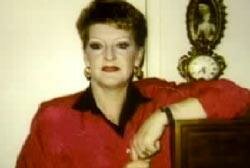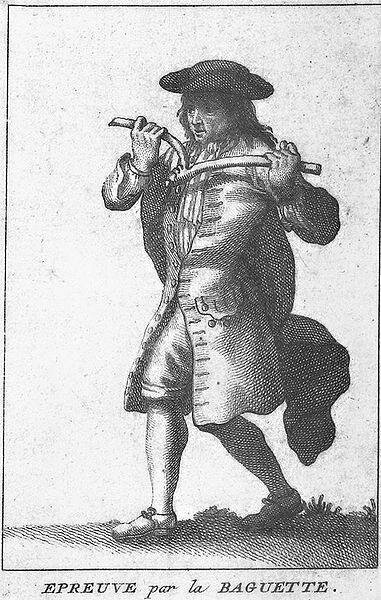Top 10 Mysterious Police Cases Solved By Psychics
Suggested by SMSSome police officers and law enforcement agencies seem to have trouble acknowledging the contributions of psychics to the solving of crimes. Mean spirited and cheerless skeptics appear to take pride in underlining the occasions when the work of psychics is inaccurate or duplicates information already discovered.
But there are cases where there can be no doubt that the contribution of psychics to the solving of a case was beneficial or even vital. Bodies found that would never have been located without the advice of a psychic, suspects described and even identified through the gifts of people with special insights; these are the mysterious, but essential pieces of the puzzle that psychics can bring to investigators.
10. Maria Scott
A number of matters contributed to the difficulty police had in finding the truth of the murder of Maria Scott. A prostitute of indigenous background, Maria’s mother claimed that these facts led the police to quickly lose interest in the case. But the police pointed out those malicious accusations by members of the Port Kembla community cluttered the investigation.
Maria Scott’s badly decomposed body was found seven months after she was reported missing. Originally police had suspected murder, but it was when the body was discovered and had five separate stab wounds that they knew they were looking for a killer.
Of the twenty-nine persons of interest, the police had worked the list down and believed that Mark Brown, a man Maria had met in a rehabilitation facility, was the culprit. But Brown had left the area and moved to Queensland.
Four and a half years after Maria Scott died Detective Senior-Constable Jeffrey Little invited psychic Debbie Malone to give her impressions of Maria’s case. He was astounded at the results. Although he knew the psychic’s evidence would never hold up in court, the detail of Debbie’s knowledge of the case was amazing.
Debbie was taken to the cabin where they thought Maria Scott had met her death and, despite the fact that much of the cabin had been changed, Malone identified the layout as it was when Scott died. She was able to locate where the knife was found, even though the drainpipe it was hidden in had been moved with the sink during the renovations.
Malone pointed out many details of objects and events that occurred in the course of the murder, some confirming the facts known and others explaining how events took place. Most startling was her confusion as she felt the murderer walk through her while she stood in the space. She explained that only ghosts could have such an effect. This was before Detective Senior-Constable Little told Debbie that Brown had committed suicide a few weeks after relocating to Queensland.
9. A Murdered Teenage Girl, 1976
In May, 1976, a fourteen-year-old girl left her home and disappeared without a trace. There were no witnesses and little interest from the Police, who explained the occurrence as a “runaway”. In frustration at the lack of support from the authorities, her parents contacted Dorothy Allison, a renowned psychic.
Dorothy Allison provided a number of clues that proved central to the discovery of the girl and the killer being brought to justice. Initially, she asked the significance of the number 2562. A seemingly random series of digits, but the girl’s parents recognized them as February 5th, 1962, the birthdate of their daughter. This gave them some confidence that the psychic was genuine.
She then went on to describe a place with two sets of twin Church steeples and a pair of smoke stacks. She spoke of swamp and marshland and the girl’s father, exasperated at the Police inaction, began to explore neighboring towns until he came to a location that fitted the description.
He found an abandoned car as predicted by Dorothy Allison and, disturbingly, the large red letters “MAR” written on a rock and in keeping with the psychic’s vision. But with a lack of resources and fading hope, he failed to find his daughter.
However, sometime after he had given up the search, a group of teenagers came across an oil drum, with the number 222 on the side, dumped in a waterhole. They didn’t realize that these three pieces of information had been provided to the parents, the last being quite specific in that the girl was in water, but she had not drowned. The teenagers discovered the body of the fourteen-year-old in the oil drum.
Dorothy Allison also had to break the news to the parents that their daughter had been strangled by her boyfriend, whom she named. When this was passed on to the police they were able to find him and they learned that he had strangled the girl, placed her in the oil drum and dumped her in the waterhole.
8. Sylvester Tonet
The case of Sylvester Tonet is not one of violence and savagery, but one of loss of an old man and the grief that this caused for his family. The Monroeville police worked tirelessly to find Sylvester, but without success and, at the request of the family, invited Nancy Myer to contribute to the search.
Nancy Myer was confident of two things almost immediately after she spoke to Mr. Tonet’s relatives. The first was that, sadly, he was dead and the second was that he had not died as a result of violence. This gave little comfort to the relatives, but they were pleased that at least there was progress.
Having been given a knitted cap belonging to Sylvester, Nancy Myer was able to explain where he would be found. She explained that he had become confused when he was out walking and became frightened of those he had asked for help.
The seventy-eight year old man then wandered into the forest, further and further away from his home. By the time he fell or lay down to rest he was a long way from the search zone that police had established in the vicinity of his house.
With local police detective Will Greenaway, Nancy followed her sense of Sylvester’s last journey. Although they were forced to stop the trek by the cold and nightfall, she pointed out on a map she drew where he would be found.
The next day, Sylvester Tonet was found about 150 yards further on from where Myer and Greenaway had stopped. He had died sometime before and Nancy Myer had converted Will Greenaway to the value of psychics in police investigations.
7. Paula Brown
In 1996, Paula Brown, a “happy, bubbly and friendly” hairdresser was out on the town with friends in Sydney, Australia. But she disappeared in the course of the night and, in the coming days her fiancée would request the help of psychics in the search for Paula.
Eight days after that fateful night, Paula Brown’s body was found. But despite the efforts of Simon Turnbull, Phillipe Durant and another psychic, the police were reticent to acknowledge the accuracy of their work.
In response to Durant’s prediction, the police representative commented, “Even though the body was discovered purely by chance, the speculation by a clairvoyant appears to have been uncannily accurate.” Paula was found less than two kilometers from the location indicated by Durant.
Other psychics also directed the family to the location in Port Botany, Sydney, but the initial search failed to find Paula. A second discovered her only fifteen meters from the original site. Sadly, in keeping with the information of the psychics, she was dead.
Even though they had the body and surveillance camera footage of the area, the police took another six years to bring her suspected killer to an inquest. But the investigation has included claims of involvement by devil worshippers, claims of drug taking and the hypnotism of a witness to help recall information.
While the New South Wales Police are hesitant to recognize the benefit of working with psychics, it is clear that without them Paula Brown’s family could have to wait a great deal longer for justice.
6. Arthur Herbert
In the midst of winter, 1984, a small plane was lost somewhere over New Hampshire or Massachusetts. It carried four people, including the pilot, one of whom was Arthur Herbert. Arthur was a young man, a little less than six feet tall with blonde shoulder length hair and a gap in his teeth. The gap had been fixed by braces in the course of 1983, he now had developed a habit of biting his nails and he had a sister who was very concerned about his wellbeing when the plane went missing.
The Civil Air Patrol and the Police carried out an extensive search to no avail and then the hunt was called off. Jessica Herbert, Arthur’s sister, was not prepared to give up her pursuit. But the Civil Air Patrol was adamant that without a location, there was nothing more than they could do.
At this point Jessica Herbert telephoned Noreen Renier, a psychic that she had been referred to by her ex-husband, an F.B.I. agent. Despite Noreen’s explanation that she probably couldn’t help, Jessica insisted that she try. When she met Jessica, Noreen was uncomfortable, thinking that she was wasting the distressed girl’s time.
However, Noreen found that she was able to connect with the plane and the people involved. She was able to give a description of the flight, the crash and the location of the plane. She also provided an account of the final moments of Arthur’s life, but then disregarded this vision as she believed that she was being influenced by Jessica’s thoughts.
Although they were skeptical, the Civil Air Patrol resumed the search, as did locals in the area indicated by Noreen Renier. With more appropriate equipment the plane was found and the details of the scene were exactly as Noreen had described.
While this case was not one of murder, kidnapping or theft, the role that Noreen Renier played in it, eventual resolution was vital. She had provided the longitude and latitude of the crash site, along with ground level descriptions of the approach to the site and the state of the occupants.
5. Melanie Uribe
While many people claim to be psychic and look to make their fortune through publicity, book sales and even television shows, occasionally a person who claims not to be a psychic stumbles into the supernatural realm. This was the case for Etta Louise Smith, who had never had the “gift” and was driven only by the desire to help someone in trouble.
Melanie Uribe was a nurse who had not made it to work and hadn’t been seen for two days. The Paicoma community of Los Angeles was in some distress at the thought of the poor woman being in trouble or worse. While police searched and the television kept the public informed, Etta Smith realized that Melanie was not where they were looking.
Somehow Etta knew that Melanie was in an area similar to the Lopez Valley, not far from Etta’s house. She saw something white beneath the brush and was certain that this was the nurse’s uniform. It had appeared in her mind as clearly as any picture and she felt it her duty to report this to the police.
The officer to whom she spoke listened patiently and let Etta Louise point out on a map the area she had in mind. He knew that he would have to pursue the lead, but he held out little hope. Etta Louise left feeling she had done all she could, but before reaching her home she was driven to investigate herself.
Taking her niece and two of her children, Etta Louise Smith headed to the Lopez Valley and found the body of Melanie Uribe in the place identical to her vision. She knew she had to raise the alarm, but as she was leaving the area a police car arrived.
On discovering the body, the police began to ask serious questions about how Etta Louise knew where the body was. But Etta Louise had no answer to this. She was subsequently charged with murder and held in custody for four days, until the real murderer was arrested.
4. The Wine Merchant of Lyons
There is a fair argument that the work of Jacques Aymar was not technically a “police” case. But that is only because there was no “police” in 17th Century France. The fact remains that Jacques was significant to the solving of a crime that was being investigated by the authorities of the time and was recognized as such by the King’s Procurator.
In 1692, a wine merchant in Lyons and his wife were found dead. Their demise was the result of a burglary, a meat cleaver and a thirst for blood … and maybe a nice claret. Surely the commotion that would accompany two people being hacked to death with a meat cleaver would have raised some clues, but those charged with investigating the crime were left red-faced and baffled.
Jacques Aymar, a dowser of some repute offered to help and the King’s Procurator was quick to bring him to Lyons to assist. This was a substantial gesture given that Aymar was a mere peasant. But it quickly bore fruit with the revelation that there had been three men involved in the crime.
There is a bizarre image that is created by Jacques setting off with his dowsing rods and following the trail of the killers. But unperturbed, he led the authorities to a prison in Beaucaire where he identified as one of the perpetrators a man, who had only just been incarcerated for stealing, from a line-up of thirteen men.
This man was taken back to Lyons where he admitted to the crime and confirmed Aymar’s assertions. On the back of this, Aymar was supplied with men to seek out the other two culprits, but before they could be captured they crossed the border into Genoa and out of French jurisdiction.
3. Four Murdered in Oneida County
While finding information about the actual case is difficult, the praise for the work of Phil Jordan is far more free-flowing. The case was a horrific example of organized and merciless killing and police were unable to gain a single sound lead.
When most other methods of Police work had failed to draw a lead worth following, Phil Jordan happened on the scene. He produced at least ten relevant and significant facts that assisted the Police in pursuing the murderers.
The case involved four innocent people being bound, hands and feet. Their mouths were then covered with masking tape and each person was shot in the head. Such care and planning in the killings were the product of a dangerous criminal.
With the help of Phil Jordan the perpetrators of this horrendous crime were captured and convicted. They are now serving sentences of one hundred years each, thanks to the work of the psychic.
On reflecting on the case and Phil Jordan’s contribution, Assistant District Attorney Kurt Hameline remarked that using gifted psychics is essential to gathering evidence and catching murderers.
2. Andre Daigle
A young man at a bar, where he has been playing pool with a friend and enjoying a beer, is approached by a young woman and asked for a lift home. He agrees telling his friend to go on without him. Four days later he hasn’t returned home and his family takes the matter to the police. Could you blame them for thinking that he was probably enjoying the young lady’s company?
But this wasn’t consistent with the nature of Andre Daigle. He had responsibilities to his work and his family that he wouldn’t neglect and picking up girls in a bar wasn’t his style. When the police wouldn’t take action, Andre’s sister on the other side of the United States took her concerns, a map of the area in which he lived and a photograph of him to Rosemarie Kerr, a psychic.
Rosemarie Kerr described one of the men responsible and the location of Andre’s body. She drew attention to his vehicle and experienced a violent pain in her head that she was convinced was an echo of the pain Andre had felt. Rosemarie was able to point to the very place, beside an interstate, where Andre would be found.
When Andre’s brother, who lived near him, investigated he was shocked to see his brother’s truck drive past. He immediately gave chase and recognized one of the men in the cabin as that described by Rosemarie Kerr. Police were drawn into the chase as the vehicles sped past and when Andre’s truck was finally cornered, the men were captured.
The men, Charles Gervais and Michael Phillips, admitted that the killing had been random and an act that was to establish their dependent partnership. The girl had been sent to lure an unsuspecting Andre to the men, where they killed him with blows from a hammer to the top of his head.
From 2,000 miles away, Rosemarie Kerr had led the police and Andre’s family to him and his murderers.
1. Edith “Google” Kiecorius
There are few things more disturbing than the loss of a child. When Edith “Google” Kiecorius was abducted in 1961, the Police of Brooklyn worked tirelessly to search every roof, river and residence for the missing four-year-old. Unfortunately to no avail and the public were becoming despondent when the vice-president of K.L.M., the major Dutch airline, asked Gerard Croiset, a clairvoyant in Utrecht, the Netherlands, to help.
Croiset agreed to help, but declined the offer of being flown to New York. He felt that the size and bustle of the city would overwhelm him, but instead asked for a photograph of Edith and a map to be sent to him. But before the conversation continued, Croiset began to gain impressions of the girl’s location and was able to give a description of her kidnapper.
The next Sunday, Mr.Vogels of K.L.M. flew to Amsterdam to meet Croiset. He had a photograph, a map and some of Edith’s clothes. Croiset quickly started to provide information, “… I see a dark woman sitting in front of a window. Two houses farther on, there is a laundry and a dry cleaner’s… I see this grey building again… There are five floors… On the second, I feel a strong emotion… The child is there… She is dead!…”
Vogels passed this information on to the New York Police immediately and with hours Edith’s body was found. Her abductor and killer was found a week later and fitted the description Croiset had given perfectly.
Sadly, the gifts of Gerard Croiset couldn’t save Edith “Google” Kiecorius, but they were able to see her killer brought to justice.



















[...] Top 10 Mysterious Police Cases Solved By Psychics __________________ "All religions, arts and sciences are branches of the same tree. All these aspirations are directed toward ennobling man's life, lifting it from the sphere of mere physical existence and leading the individual towards freedom." "The true value of a human being is determined primarily by the measure and the sense in which he has attained liberation from the self." "Only a life lived for others is a life worth while." "When the solution is simple, God is answering." Albert Einstein [...]
[…] Top 10 Mysterious Police Cases Solved By Psychics – Top 10 Mysterious Police Cases Solved By Psychics _____ “All religions, arts and sciences are branches of the same tree. All these aspirations are directed …… […]